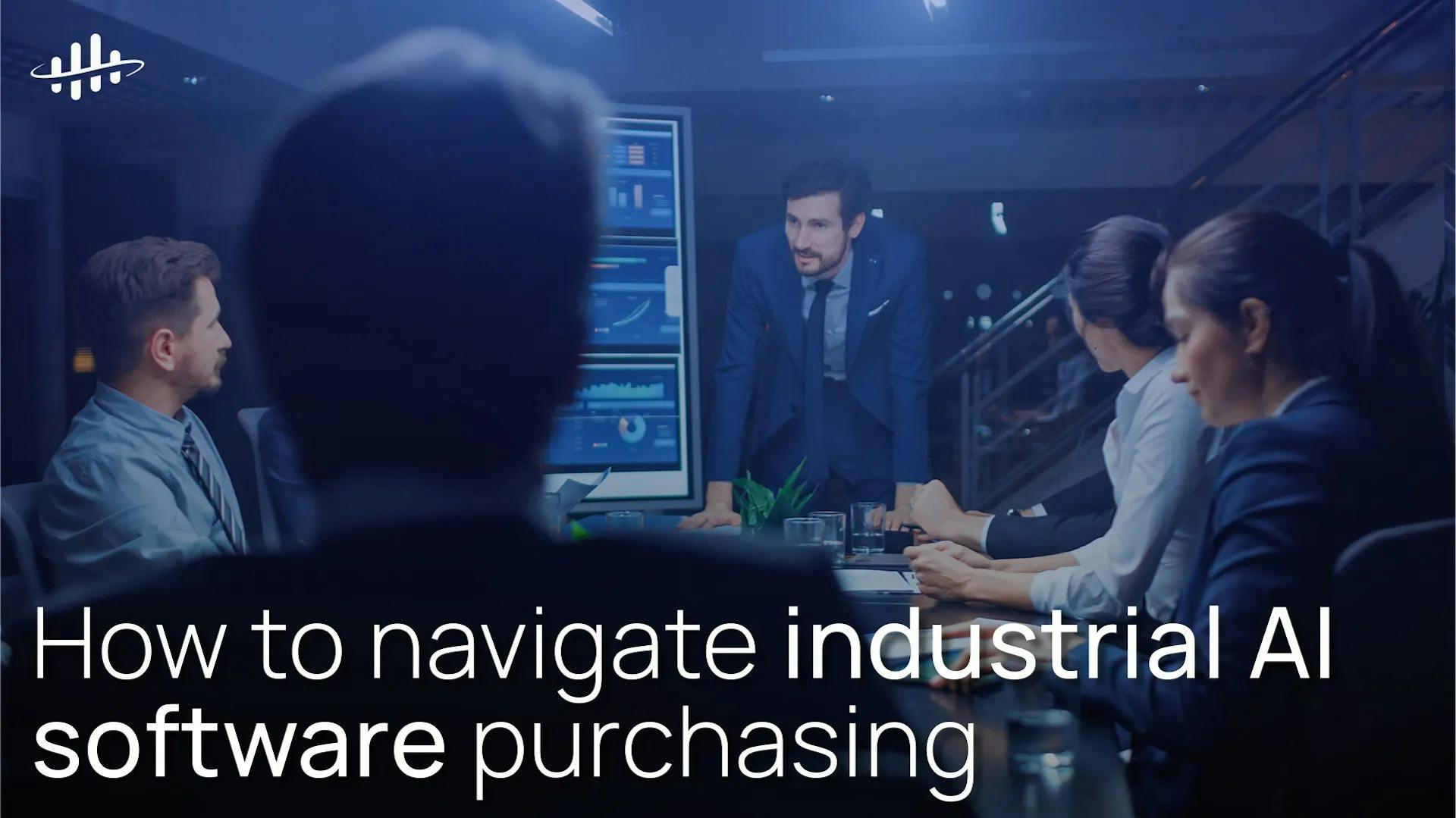How to avoid decision-making pitfalls when purchasing Industrial AI and Data Management Software

Nobody wants to be in the situation where after months of vendor meetings, internal alignment, tech reviews, and security checks for a new software purchase…and your executive sponsor says “I’m just not buying it…” But that’s the reality for many complex enterprise purchases today, even with board-approved budgets opening up for AI software and an accelerating pace of procurement due to the complexity of decision-making involved.
Today’s digital transformation and operations executives in chemical production, refining, and energy are under increasing pressure to deliver more productivity, reliability, and safety with fewer human resources– but more software. According to recent Gartner Maverick Research, “by 2030, 75% of operational decisions will be made within an AI-enabled application or process,” demanding strategic – and rapid– realignment around technology.
But embarking on mid-game data and technology investments can be quite complex and sensitive, especially given existing entrenched software (SAP, MAXIMO, AVEVA, etc.), siloed data management practices, and general resistance to change. Is the overarching strategy clear and communicated? Who needs to be part of the buying center? Who’s personally invested in competing strategies? What impact will these decisions have on future teams and workflows? Etc…
Given Cognite’s first-hand experience with a wide range of organizational buying behavior, here are two major areas that we’ve seen disrupt AI and data management software procurement.

1. Fundamental questions on value and strategy remain unanswered (or are answered too late)
Time and time again, we’ve seen a few common questions that when acknowledged too late or not addressed by the right stakeholders can either kill or delay a software purchase:
- Have use cases and value been defined and mapped?
Business value must lead the way when it comes to complex digitization projects. Rather than “eating the elephant” all at once, projects must be broken down into manageable use cases and prioritized based on strategic near or long-term value. Doing this with enough detail and a product roadmap-like mindset ensures that AI-enabling software purchases are viewed by your buying center as an investment, not a cost, making it more straightforward to ensure buy-in and justify funding.
Need help here with the numbers? Contact us for a free value review to credibly understand the potential of your AI project and identify where to start - all based on prior delivered value and industry benchmarks.
- Is everyone aligned to the same software strategy?
Often, there are competing viewpoints on do it yourself (DIY) vs software-as-a-service (SaaS) vs a hybrid approach; IT wants to build, while the business wants to buy. Compounding this misalignment is the fact that sometimes there is no clear decision-maker. This is where your digital maverick must lead and evaluate what’s in the best interest of the business. Is it more important to move quickly and innovate faster than your peers? Or is it more important to build from scratch and sacrifice speed for the sake of tech stack completeness.
It's important to note that this will be a good point in the conversation to also align on the most suitable software deployment type for the organization (on-premise, private cloud, etc) as it affects the financial, time and human resource distribution, user experience, and overall software management and performance.
Struggling to understand the implications and nuance of the various software deployment types? Read our white paper which discusses the pros and cons of different SaaS environments.
- What’s the honest state of your data and digital maturity for AI?
We get it- your board is pushing hard to invest in generative AI projects. But getting buy-in, approvals, and operational value/success becomes easier when you incorporate your larger data and analytics journey. Coupled with the previous questions around use cases, by honestly evaluating your current technical strengths and weaknesses around data, you can plot a more accurate roadmap with the right technical components to either quickly build the maturity or finesse the maturity needed to deploy AI at scale.
The modern tech stack doesn’t need to be hard to understand. Read our article to demystify it and identify where you need to invest.

2. The modern buying center for data and AI tech is not understood or engaged
Modern decision-making is a team sport due to the accelerating convergence of operational technology (OT) and information technology (IT) and the business implications of any new software. These modern buying centers can include more stakeholders than ever such as executive sponsors, business champions, project managers, IT and security, and digital transformation leadership.
A Strategic Minefield
As a group, you’ll need to navigate key strategic questions such as whether to push enterprise-wide software decisions out to the business, or use a “lighthouse strategy” to develop repeatable, scalable business capabilities built around key use cases. But all too often, there are either too few stakeholders engaged, there’s an improper weighting of power in the decision, or you lack a “digital maverick” personality, responsible for guiding AI and other transformation initiatives by developing clear vision and finding creative middle ground between conflicting stakeholders.
Related: How to become a digital maverick? →
For example, IT teams often have the final word when it comes to technology decisions as they are tasked with maintaining the health of the organization's IT infrastructure and ensuring security. They are not necessarily thinking first about how these types of software purchases might affect business outcomes.
Lead with Business Value
Yet, this macro trend is changing as this new era of technology is driving competitive edge with flexibility and time to value and is shifting towards business and user needs. In the above-mentioned Gartner Maverick research, they make a disruptive recommendation to 'stop investing in IT skills' given the rapid democratization here of generative AI and other quickly-developing technologies. While this contradicts previous generations of Gartner recommendations, it accurately reflects the reality today to lead with business value.
Acting on this recommendation requires rebalancing the decision-making weights in your buying center to make it more attractive for IT to support a software purchase if the business need and value clearly outweighs potential risk. This is why adding weight to the input of your digital maverick is key.
Missing a digital maverick personality in your software buying center? That’s a risk to a successful AI and data management software deal.
Conclusion
Software purchases around industrial AI are accelerating now that boards and executives are approving new budgets to capture the potential and competitive advantage. Do you have the right team in place and have you answered key questions that will drive a quick and successful outcome and put you on track to deliver up to a 400% return on your investments in data and AI?
If not, Cognite can help. Get in touch to discuss more and check out (and share) our complete RFP guide to make sure you are positioned for success.
See Cognite Data Fusion® in action
Get in touch with our product experts to learn more and identify quick wins